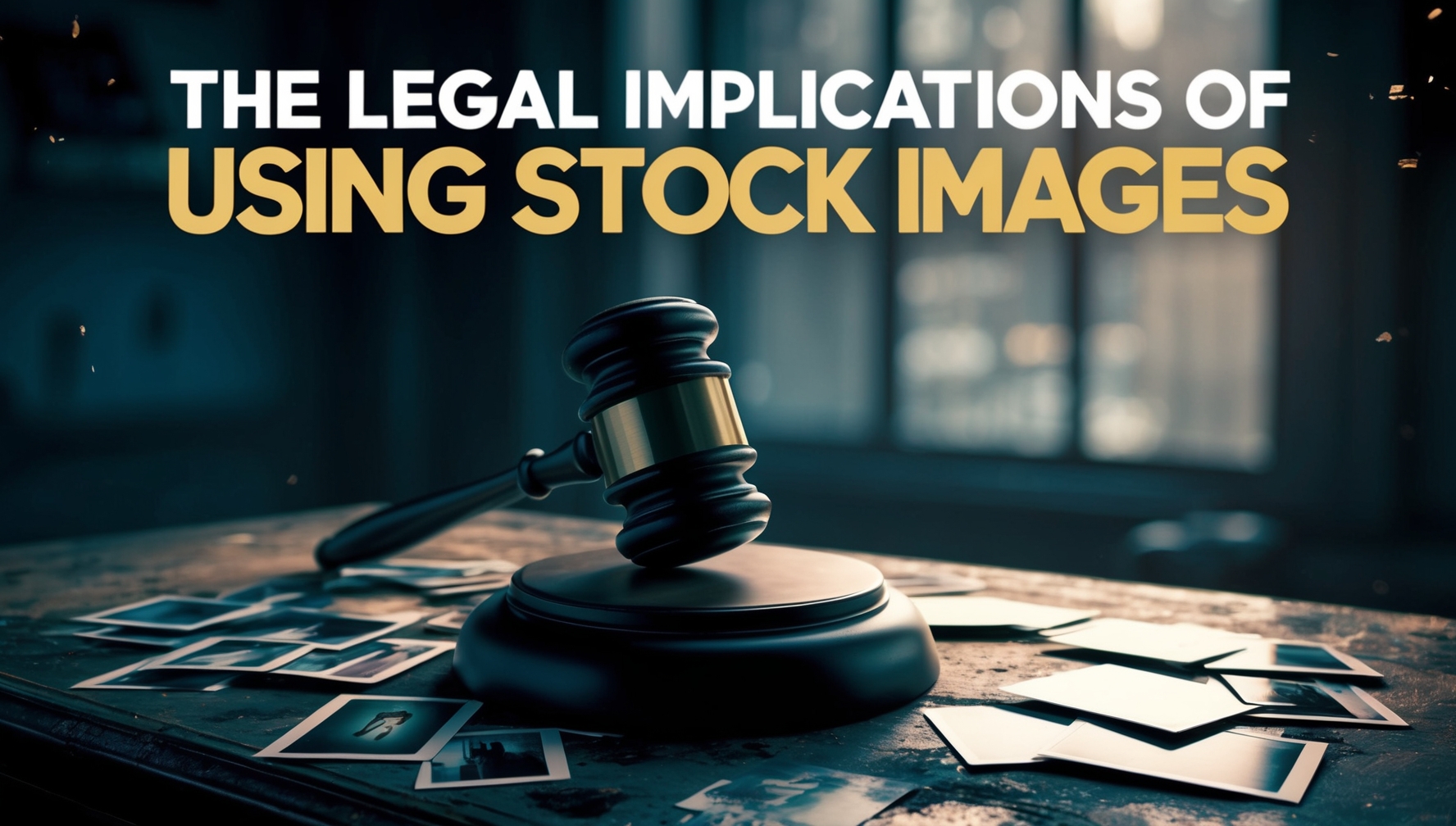Using stock images in your projects can be a quick and cost-effective way to enhance your content, but it’s essential to understand the legal implications involved. Misusing stock images can lead to serious legal consequences, including fines, lawsuits, and damage to your reputation. Being aware of the mistakes to avoid with stock images can help you use them more effectively and legally. Here’s what you need to know about the legal aspects of using stock images.
1. Copyright Infringement
One of the most significant legal risks when using stock images is copyright infringement. Copyright is a form of intellectual property protection that grants the image creator exclusive rights to use and distribute their work. If you use an image without the proper license or permission, you are violating the creator’s copyright.
- Tip: Always ensure you have the correct license for any image you use. Avoid using images from random web searches unless you can verify they are in the public domain or under a license that allows free use.
2. Understanding Image Licenses
Stock images are typically sold or distributed under specific licenses, which dictate how and where you can use the images. There are several types of stock image licenses, such as royalty-free, rights-managed, and Creative Commons, each with different usage rights and restrictions.
- Tip: Read the license agreement carefully before using an image. Make sure you understand the limitations, such as the number of times you can use the image, the type of media it can be used in, and any geographic or time-based restrictions.
3. Attribution Requirements
Some stock images, especially those under Creative Commons licenses, require you to credit the photographer or creator. Failing to provide proper attribution can result in legal action, as it violates the terms of the license. Understanding how to credit stock images correctly is essential to avoid any legal issues and to respect the work of creators.
- Tip: If an image requires attribution, include a credit line that clearly identifies the creator, typically in the caption, footer, or another visible location near the image.
4. Model and Property Releases
When using images that include recognizable people or private property, it’s essential to ensure that the image comes with a model or property release. A model release is a signed agreement from the person in the photo allowing their likeness to be used, while a property release covers the use of privately owned property.
- Tip: Verify that any image featuring identifiable people or private properties includes the necessary releases. Without these releases, using the image in a commercial context could lead to invasion of privacy claims or lawsuits.
5. Commercial vs. Editorial Use
Some stock images are licensed only for editorial use, meaning they can be used in news articles, blogs, or educational content but not for commercial purposes like advertising or product packaging. Using an editorial-use-only image in a commercial context can result in legal action.
- Tip: Always check the license to see if the image is restricted to editorial use. If you need the image for commercial purposes, ensure it is licensed accordingly.
6. Exclusive Licensing and Ownership
In some cases, you might purchase an exclusive license for a stock image, giving you sole rights to use the image in a specific context. However, exclusive licenses come with strict terms, and violating these terms can lead to disputes.
- Tip: If you hold an exclusive license, be careful to adhere to its terms. Also, monitor for potential misuse by others, as this could undermine the value of your exclusivity.
7. Legal Consequences of Misuse
Misusing stock images can result in various legal consequences, including cease-and-desist orders, fines, and lawsuits. In some cases, the penalties can be substantial, especially if the misuse is deemed willful or if the image is used in a highly public or commercial context.
- Tip: To avoid legal consequences, always use images in compliance with their license agreements, and consider consulting legal counsel if you’re unsure about the terms.
8. The Importance of Record-Keeping
Keeping detailed records of all the stock images you use, including their licenses, purchase receipts, and any correspondence with the image provider, is crucial. This documentation can protect you in case of legal disputes.
- Tip: Create a file or database where you store all relevant information about each stock image you use. This should include the date of purchase, the license terms, and any releases associated with the image.
Conclusion
Understanding the legal implications of using stock images is essential to avoid copyright infringement, lawsuits, and other legal issues. By carefully reviewing image licenses, respecting attribution requirements, ensuring proper releases, and keeping thorough records, you can use stock images confidently and legally in your projects.
